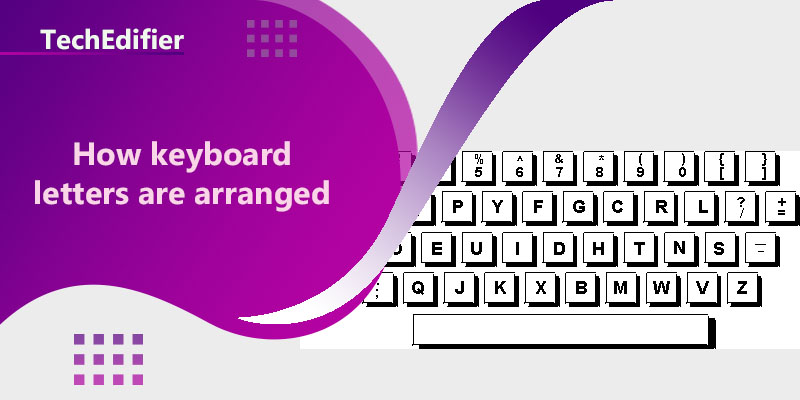The letters on a keyboard are arranged in a standard layout called the “QWERTY” layout, named after the first six letters on the top row of the keyboard.
The QWERTY layout was designed to reduce the likelihood of jamming on mechanical typewriters, and it is still used on most modern computer keyboards, including those for the PS5. The layout is designed in such a way that the most frequently used letters are placed in a way that allows the typist to type quickly and efficiently.
The letters are arranged in a rectangular grid, with the letters being divided into three rows. The top row contains the letters Q, W, E, R, T, and Y, the middle row contains the letters A, S, D, F, G, H, J, K, L, and the bottom row contains the letters Z, X, C, V, B, N, M and so on.
Additionally, there are some special characters and symbols on the keyboard, such as numbers, punctuation marks, and function keys, which are located above, below, or to the side of the letters.
Please let me know if you want more information.
Why is QWERTY not ABCD?
The QWERTY layout is not in alphabetical order because it was designed to reduce the likelihood of jamming on mechanical typewriters.
When the first mechanical typewriters were invented in the late 1800s, the keys were arranged in alphabetical order. However, this layout caused a problem known as “jamming” where the mechanical arms of the typewriter would clash with each other if two common letters were typed in succession. To solve this problem, the keyboard layout was redesigned to place the most commonly used letters further apart, reducing the likelihood of jamming.
The QWERTY layout was one of the first designs that was created to solve this problem, and it quickly became the standard layout for mechanical typewriters. It is still used today because of its historical significance, and the fact that it has become the standard layout for computer keyboards, which are based on the mechanical typewriter.
It’s worth noting that some other keyboard layouts like Dvorak Simplified Keyboard, Colemak, have been created to improve typing speed and reduce typing strain. However, QWERTY still remains the most widely used layout.
Why do keyboards have the QWERTY arrangement?
The QWERTY layout was designed for the mechanical typewriter. The original design of the keyboard had the letters arranged in alphabetical order, but this caused a problem known as “jamming” where the mechanical arms of the typewriter would clash with each other if two common letters were typed in succession. To solve this problem, Christopher Latham Sholes, a newspaper editor, printer and inventor, developed a keyboard layout that placed the most commonly used letters further apart in order to reduce the likelihood of jamming.
The layout was patented in 1878 and was called the “Sholes and Glidden Type-Writer”. It became popular and widely used, and it was eventually refined and renamed as the QWERTY layout, after the first six letters on the top row of the keyboard.
QWERTY quickly became the standard layout for mechanical typewriters and due to the historical significance, it’s still used today as the standard layout for computer keyboard. It’s worth noting that while other layouts like Dvorak Simplified Keyboard, Colemak have been created to improve typing speed and reduce typing strain, QWERTY still remains the most widely used layout.
People Are Also Reading:
👉 Top Reviews
- [Top Rated] Best Wifi Extender For Spectrum – Review In 2023
- [Top-Rated] Best Bluetooth Speaker For Projector
- [Top-rated] Best pocket wifi router
- [Top-rated] Best wifi extender for blink cameras – Review in 2023
- [Top Rated] Best Wifi Extender For Ring Camera – Review In 2023
👉 Top Tech News
- How many keyboard layouts are there
- How to network laptop and desktop
- Where is the catholic tv network
- How much wifi does a laptop use
- Will wireless headphones work on a plane
👉 Top WiFi Routers
- TP-Link AX6600 WiFi 6 Gaming Router (Archer GX90) Top Features
- TP-Link AC750 Wireless Portable Nano Travel Router Top Features
- Most Common Comcast Xfinity Issues People Ask About
- [Top-rated] Best linux wifi adapter – Reviews in 2023
- Pick The Best Mesh Wifi for AT&T Fiber or Uverse
